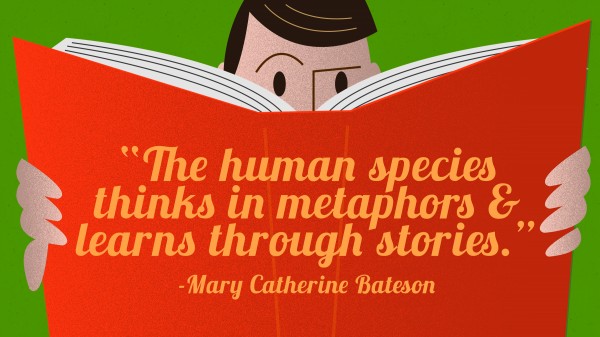We declare that the Old Age of template PowerPoint presentations has officially ended, relegated to middle schoolers giving a report on Tutankhamen. The New Age of presentations has arrived, bringing with it beautifully designed slides, minimal text, and not a yawn in sight. Here are the five commandments of the New Age:
1. No More Bullets
No more bullet points. None. They clutter your slides, they aren’t impactful, and they don’t look like great design. It’s not going to extend your presentation to click through a slide where all of your points (which you would be explaining anyways) have their own showcase slide. If you absolutely must use these atrocities, there are rules to follow. Other than that, your audience will thank you for showcasing one bold statement at a time.
2. Longer Decks, Trust Us
Longer decks don’t mean “more content.” It means that your existing content is stretched out to emphasize space, not clutter. You would spend the same amount of time going over a 10 slide deck that has 40 points as a 40 slide deck that has 40 points; the number of points is still the same. The amount of time you explain them is the same. Your deck just looks about 100% more amazing when it’s not messy.
3. Templates Are Out
They imply a lack of trying, they control the way your content looks, and the whole world knows it’s a template. It’s the painful standard that everyone has come to accept, but is to easy to avoid with a bold background photo and some attractive text. That’s why we say RIP to templates and “hello” to that tiny bit of extra effort.
4. Storytelling Is In
Verbose language and dense statistics aren’t going to win the hearts of your audience; the stories behind those statistics will. The human element should be present no matter what you are presenting or whom you are presenting to. Stories matter. Memorization of facts use the fickle frontal lobe of the brain. However, telling a story activates the deeper parts of the brain (the hippocampus and amygdala) where emotion and memory connect.
5. Don’t Apologize
This new rule of presenting and public speaking is simple yet effective: don’t apologize during your presentation. Not at the beginning because you are nervous, not in the middle because you forgot a main point, and not at the end because you think your slides looked unprofessional. There has never been an instance where an apology improved the audience reception; it can only hurt your delivery.
Change is inevitable and the New Age of presentations is no different. Start with these five rules and embrace the future!
Question: How can you utilize these tips for your next presentation?

